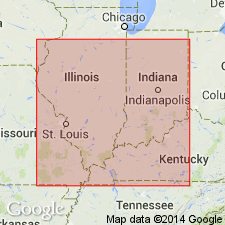
- Usage in publication:
-
- Sylamore Sandstone
- Modifications:
-
- Areal extent
- AAPG geologic province:
-
- Illinois basin
Summary:
Basal formation of the New Albany Group in central and western IL. Unit consists of subrounded to rounded fine to medium quartz sand cemented with calcite, dolomite, or pyrite. Phosphatic nodules, conodonts, fish teeth, and phosphatic brachiopods are common. Bed is bioturbated in most areas. Rarely exceeds 5 ft in thickness in western and central IL and is generally only a few inches thick. Unconformably rests on carbonate rocks ranging from Late Ordovician to Middle Devonian. The sandstone grades upward into the Sweetland Creek Shale or the Sweetland Creek and Grassy Creek Shales undifferentiated. Sylamore and overlying shales are time transgressive becoming younger northward and westward. Conodonts indicate an early Late Devonian age. Thin quartz sandstone beds at the base of the Selmier in southeastern IN may be correlative with the Sylamore.
Source: GNU records (USGS DDS-6; Reston GNULEX).
For more information, please contact Nancy Stamm, Geologic Names Committee Secretary.
Asterisk (*) indicates published by U.S. Geological Survey authors.
"No current usage" (†) implies that a name has been abandoned or has fallen into disuse. Former usage and, if known, replacement name given in parentheses ( ).
Slash (/) indicates name conflicts with nomenclatural guidelines (CSN, 1933; ACSN, 1961, 1970; NACSN, 1983, 2005, 2021). May be explained within brackets ([ ]).

